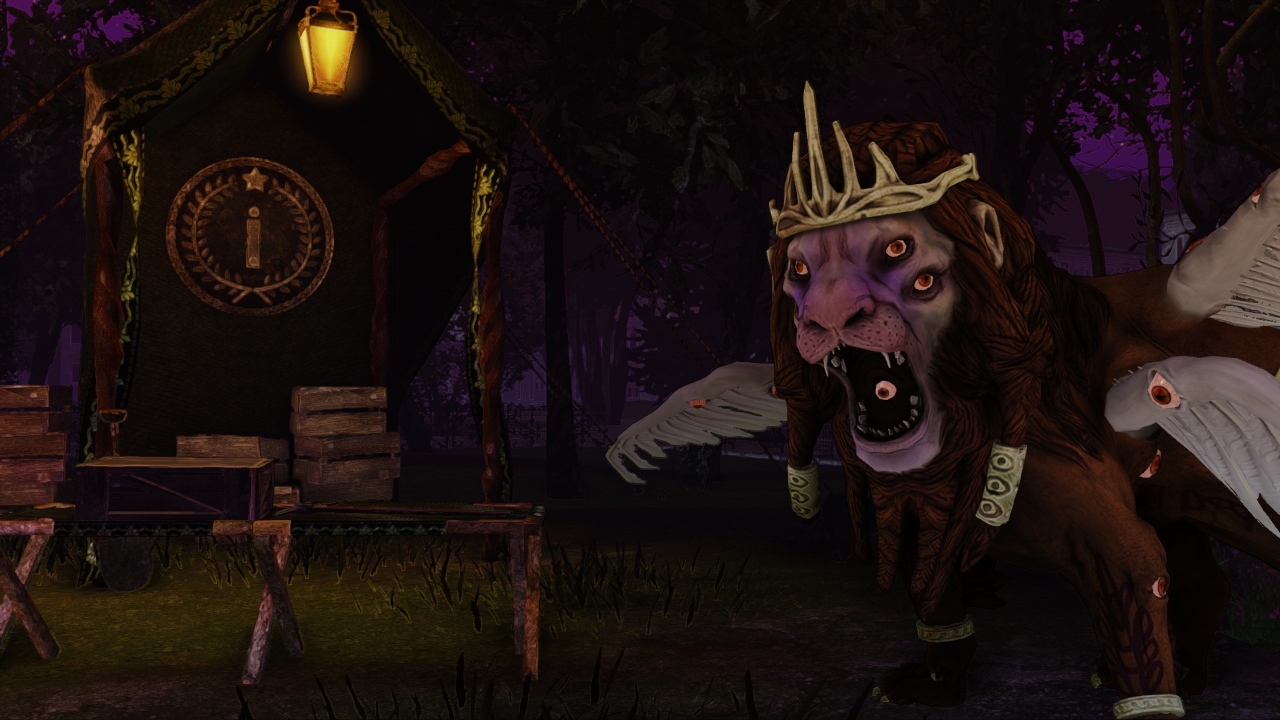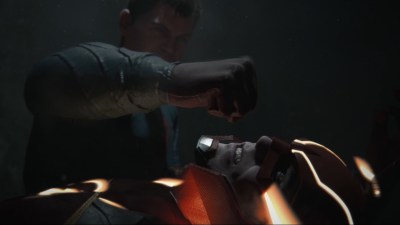Chilean indie developer ACE Team is best known for the first-person brawler Zeno Clash and puzzler Rock of Ages. Over the course of just a few titles, they’ve garnered a reputation for producing quirky titles based around setting multiple genres on a collision course and creating something interesting and unique out of the wreckage. Abyss Odyssey continue this trend, sporting a graphical style, story and music inspired by the traditions and folklore of their native Chile and combining platforming, role-playing games and fighting games to produce something which stands out from anything else in recent memory. These influences certainly lend the game a unique atmosphere, but does the gameplay stand a chance?
The story takes please in 1890. Strange cracks have started to form around around the city of Santiago. These cracks are soon discovered to be doorways for monsters to pour through into our world and bring destruction to the city. Of course, as demonic invasions tend to, this drives the city into turmoil, leaving the army to try their best to keep the monsters at bay. A strange sword-wielding woman named Katrien comes out of nowhere and claims that this is all a cause of a powerful warlock whose dreams deep below are starting to infect reality, and that she will be the one to end him.
Gameplay is best described as a blend between Metroid and Street Fighter by way of the random generation of games like Spelunky. The randomly-generated 2D levels, complex fighting system, and online multiplayer - both co-op and competitive - combine to keep the adventure going on for quite awhile, resulting in a game that, while short, benefits from multiple playthroughs. You gain XP and loot as you fight through the monstrous hordes, leveling up and collecting items and weapons from your foes to deal more damage to future enemies. Over time, you’ll also unlock two more playable characters - the Ghost Monk and La Pincoya - who each have their own playstyle and skills to learn and master.
Abyss Odyssey features a tight combo system, rewarding fast reflexes and awareness of your surroundings. Unless you’re careful it’s all too easy to find yourself being backed into a corner, so you need to position yourself carefully. Enemies - of which there are over 30 unique types - also have unique movesets more akin to what you’d expect to find in a fighting game than side-scrolling platformer. Each requires different tactics in order to defeat, meaning observation and quick adaptation is key to success. You can also take over the souls of your enemies upon death via a “tagging” system, fueled by your mana. Once possessed, you can transform into any of these monster types and it soon becomes clear just how much thought went into the design of each. This switching of tactics and movesets lends combat a dynamic feel and depth not often seen in other action platformers.
Where the game falls down is how it implements grinding. You’re forced to replay levels over and over again, grinding enemies to to get to a point where you can take on a boss with ease, making the experience stray from an epic adventure to a chore that breaks the flow of gameplay. Another flaw is the difficulty curve. Even on the easiest settings, the game is often punishingly difficult and this only magnifies the frustration that comes with feeling like you need to grind a level over and over again. While this is almost certainly a design choice made to emphasize the developer’s desire for replayability, it feels frustrating and artificial, and it’s unlikely many will have the patience to stick with it for long after their initial run through the campaign.
Another reason why many won’t continue to play beyond their initial first or second playthroughs is the level design. While the algorithm used to randomly generate levels does a good enough job and never results in levels which can’t be completed, and a number of different tilesets provides a level of visual variety, it results in stages which lack the human touch. Secrets are present in each area, but obviously signposted and never feel satisfying to reach, and the rewards are often disappointing - a health potion or damage buff is usually what you’ll end up with. The levels themselves are simply a straight run from point A to point B. The layout might change each time you play, but you’ll still be doing exactly the same thing every time. Feelings of boredom and repetition soon set in and leads to a sense that you’ve seen everything the game has to offer a just a few hours.
Multiplayer in Abyss Odyssey comes in the form of 2 player co-op in which you can engage your friends or strangers in a campaign together. It surprisingly works well, with fluid controls and a simpler take on the game, but with friendly fire enabled by default, it does leave you an open target for players out to antagonize others. Competitive play takes the form of simple arena fights which offer a fun diversion but is unlikely to hold your attention for too long.
The most interesting aspect of the multiplayer though is how ACE Team has implemented asynchronous play. While the campaign is short, every time a player defeats the Warlock at the end, their victory is recorded and added to an overall total. As more and more players defeat him, his mask begins to gradually crack; over time it will shatter, adding a new phase to the final battle that further ramps up the difficulty.
Overall, Abyss Obyssey is a game worth playing despite its many flaws. Imaginative, quirky and fun, with a bit more content and a more gentle approach to easing players in and it could have been something truly special. As it stands, a cruel difficulty curve, cookie-cutter level design and lack of player guidance often pull the experience down into frustration and repetition. Give it a chance and look past its flaws though, and there’s enough depth to keep patient players satisfied for a good while.

